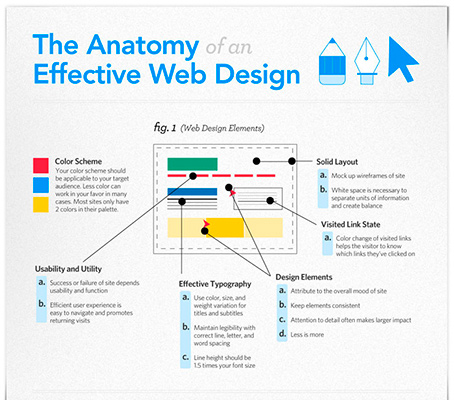Interested In Learning Exactly How Site Style Has Progressed For Many Years? Discover The Journey From Standard, Uncomplicated Layouts To User-Centric User Interfaces That Prioritize The Visitor'S Experience
Interested In Learning Exactly How Site Style Has Progressed For Many Years? Discover The Journey From Standard, Uncomplicated Layouts To User-Centric User Interfaces That Prioritize The Visitor'S Experience
Blog Article
Content By-Monroe Singer
In the past, internet sites were simple and concentrated on information. Navigation was direct, and style was for desktop computers. Currently, user experience is key. Information guides designs for simple navigating. Responsive formats fit different tools. Today, dark mode decreases stress, and minimalist menus improve navigation. Interactive features engage individuals, and strong visuals attract attention. AI combination boosts interaction. See how https://internetmarketingarticle20864.blogoscience.com/35970466/trying-to-find-a-digital-marketing-firm-that-fits-your-company-needs-follow-these-actions-to-discover-the-excellent-suit has developed to enhance your online trip.
Early Days of Web Design
In the very early days of web design, simpleness reigned supreme. Web sites were standard, with limited shades, typefaces, and formats. The focus got on providing details as opposed to flashy visuals. Individuals accessed the internet via sluggish dial-up connections, so rate and capability were key.
Navigation menus were straightforward, generally situated on top or side of the page. Sites were developed for desktop, as mobile browsing wasn't yet widespread. Content was king, and developers prioritized simple readability over complicated layout aspects.
HTML was the main coding language made use of, and developers needed to function within its restraints. Computer animations and interactive attributes were minimal compared to today's standards. https://www.forbes.com/sites/forbescommunicationscouncil/2021/11/19/getting-results-four-tips-for-creating-a-strong-seo-strategy/ were fixed, with little dynamic content or personalized user experiences.
Surge of User-Focused Layout
With the development of site style, a change towards user-focused design concepts has actually become increasingly prominent. Today, creating web sites that prioritize user experience is essential for engaging site visitors and accomplishing service objectives. User-focused layout entails understanding the needs, preferences, and habits of your target market to customize the website's design, content, and features accordingly.
Developers now perform complete research, such as customer surveys and use testing, to collect understandings and feedback straight from individuals. This data-driven approach aids in producing instinctive navigating, clear calls-to-action, and aesthetically appealing interfaces that resonate with site visitors. By putting the individual at the center of the style procedure, sites can deliver an extra individualized and delightful experience.
Receptive design has also emerged as a key element of user-focused layout, ensuring that web sites are enhanced for different gadgets and screen dimensions. This versatility enhances availability and use, satisfying the diverse means users communicate with sites today. Essentially, https://emilioqkdwq.howeweb.com/30441047/searching-for-an-electronic-advertising-and-marketing-company-that-fits-your-business-requirements-follow-these-steps-to-discover-the-excellent-suit of user-focused design indicates a change in the direction of producing electronic experiences that focus on the needs and expectations of completion individual.
Modern Trends in Web Design
Discover the most up to date fads forming web design today. organic optimization is dark mode layout, providing a sleek and contemporary appearance while decreasing eye strain in low-light environments. An additional essential pattern is minimalist navigation, simplifying food selections and boosting individual experience by focusing on essential elements. Incorporating micro-interactions, such as animated buttons or scrolling effects, can create an extra appealing and interactive site. Responsive layout stays essential, making sure seamless user experiences across different tools. Additionally, using bold typography and asymmetrical formats can include visual rate of interest and accentuate particular material.
Incorporating AI technology, like chatbots for client assistance or personalized referrals, improves individual engagement and streamlines procedures. Availability has likewise become a substantial fad, with developers prioritizing inclusive design methods to cater to varied individual demands. Welcoming sustainability by enhancing site efficiency for rate and performance is an additional emerging trend in web design. Collaborating with customer responses and information analytics to iterate and boost style continually is essential for staying relevant in the ever-evolving digital landscape. By accepting these modern fads, you can produce an aesthetically attractive, user-friendly web site that resonates with your audience.
Conclusion
As you review the advancement of site design from the very early days to currently, you can see how user-focused design has actually become the driving force behind modern-day patterns.
Accept the trip of modification and adaptation in website design, constantly maintaining the user experience at the leading edge.
Remain present with the latest patterns and innovations, and never stop evolving your approach to produce visually spectacular and easy to use web sites.
Progress, adjust, and develop - the future of web design is in your hands.
